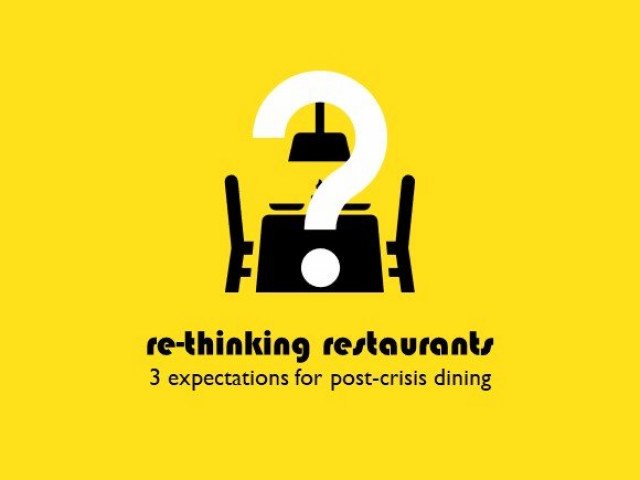Re-thinking restaurants
May 27, 2020, 4:32 PM
COVID-19 has changed the game but it’s wake-up call the industry has been needing for some time. Many acknowledged the restaurant business model was broken, even before the crisis, surely now’s the time for a re-think.
Increasing labour costs, rent, food costs, market saturation, undersupply of skilled workers and the disruption by delivery platforms meant restaurants merely exist on the fine edge of breakeven or collapse, with the big ones falling with the loudest noise. Nobody is making much money and those that seem to be are exploiting upstream supplier credit terms - hardly traits of a sustainable business model.
An interesting article in The Sydney Morning Herald (“Restaurants remade”) by Callan Boys asks the question; what kind of dining experience can Australians expect a year from now? Here are 3 expectations for the brave new world of post-crisis dining.
1. Value matters
A $70 steak is going to be a harder sell, not the least because of households’ tentative financial position and precarious employment prospects. Josh Niland put it best; “The only thing that people want is to be cooked good, wholesome, proper food while enjoying company. I’m questioning all the silly noise that come with that.” Operators will need a strong value proposition and exceptional execution of it. While people might still pay a higher price, they are doing to need a damn good reason to do so.
2. Prepayments
This is an interesting idea and is likened to a ticketed theatre performance. The fact is ‘no-show’ diners ruin restaurants. This is most applicable to the premium end of dining, where customers expect a theatre like experience. The higher price and payment commitment mean that value will be delivered and experienced in a different way. The benefits of prepayment are also hoped to run upstream – operators might pay their suppliers on time!
3. Downsizing
Smaller restaurants, tighter menus, fewer chefs and staff. Post-COVID restaurants must be lean and efficient. Paying wait staff to wander aimlessly around attempting to look busy, incessantly asking patrons if they are OK and topping up their water, is not productive. In a smaller restaurant, let the Chef introduce the food then let the food (and your company) do the talking.

